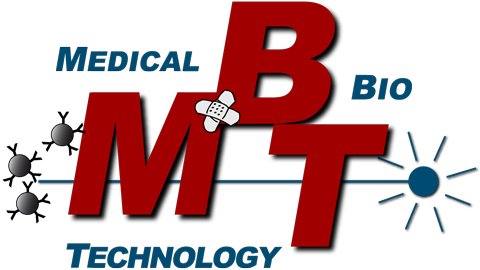Muscle Opto-Biomechatronics
![]()
Muscle disorders are mainly characterized by a decline in force production and associated weakness, compromising mobility and quality of life in humans. The causes of inherited and acquired myopathies are diverse, as muscle force is the result of a complex activation cascade within the organ that comprises activation of ion channels, excitation-contraction coupling, calcium regulation and motor protein interaction. Additionally, muscle is not only characterized by its active but also by passive (visco-) elasticity components, and both set the biomechanical and structural properties of muscle tissue and cells. Studying those strucutral/biomechanical properties in health and disease is the medical science-related focus of our research while engineering the opto-biomechatronics platforms to conveniently and automatically do so, is the fouces of our opto-mechano-electrical engineering R&D work. In this holistic approach, we strongly collaborate with clinicians and research institutes all over the world (e.g. US, Australia), providing us with input and up-to-date questions of modern medicine and biomaterial research.
To acquire the most reliable and repetitive information regarding the biomechanics properties of muscle across various morphometric scales, from whole muscle down to multicellular fiber bundle and single fiber preparations to identify specific mechanisms related to disease pathophysiology, clinical phenotyping or muscle performance during aging, we endeavour to design and engineer new devices that allow automated and standardized recordings in musculo-skeletal and heart muscle preparations to quantify their broad spectrum of biomechanical and structural parameters. This task requires a broad knowledge of biological background, as well as engineering and biotechnology creativity, and sometimes, also a bit of nerdiness to select the state-of-the-art technology required to manufacture robotic systems and setup custom-made software to suite all needs. All design, and engineering implementation is performed in our in-house optics/mechanics/electronics workshops and CAD design studios (using Inventor software). Recent biomedical applications include full analyses of muscle mechanics in an animal model of human R350P desminopathy over a wide age range (Neuropathology Erlangen), alpha-actinin-3 deficiency (‚gene-of-speed‘) models (University of Melbourne, UNSW Sydney), dystrophic mdx mouse models (Cardiology Department Heidelberg), cardiac wall stiffening in myocardial infarction (Pediatrics Cardiology Erlangen), myotome segmental elasticity during tadpole development (Developmental Biology Erlangen), and more ongoing work.
